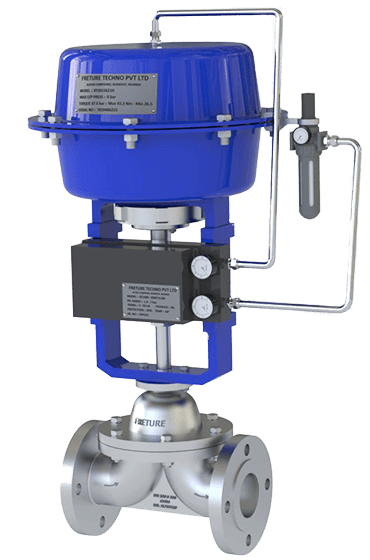1. What is a diaphragm control valve?
A diaphragm control valve is a type of valve that uses a flexible diaphragm to regulate fluid flow. It provides precise flow control, leak-proof operation, and is ideal for handling corrosive, high-purity, or viscous fluids.
2. How does a diaphragm control valve work?
The valve operates by moving a flexible diaphragm up or down to control fluid flow. When the actuator applies force, the diaphragm seals against the valve body, restricting flow. When released, the diaphragm allows fluid to pass through.
3. What are the key advantages of diaphragm control valves?
Leak-proof operation due to hermetic sealing.
Corrosion resistance, making them ideal for aggressive chemicals.
Hygienic and sterile processing for pharmaceutical and food applications.
Low maintenance due to fewer moving parts.
4. What are the main types of diaphragm control valves?
Weir-Type Diaphragm Valves: Used for precise flow control in sterile environments.
Straight-Through Diaphragm Valves: Suitable for handling high-viscosity fluids and slurries.
Manual vs. Automated Valves: Manual versions require human operation, while automated versions use pneumatic or electric actuators for precise control.
5. What industries use diaphragm control valves?
Diaphragm control valves are widely used in:
Pharmaceutical and biotechnology industries for sterile fluid control.
Chemical processing for handling corrosive and hazardous fluids.
Water treatment plants for flow regulation in filtration and disinfection systems.
Food and beverage processing to maintain hygienic conditions.
Semiconductor manufacturing for ultrapure fluid applications.
6. How do electric actuator diaphragm valves improve efficiency?
Electric actuator diaphragm valves offer precise automation, faster response times, and remote operation. They integrate with SCADA and IoT systems, reducing energy consumption and eliminating manual adjustments.
7. What materials are used in diaphragm valves?
Common materials include:
Diaphragms: PTFE (Teflon), EPDM, and rubber for chemical resistance.
Valve bodies: Stainless steel, plastic (PVC, PP), and cast iron for durability and compatibility with different fluids.
8. How do diaphragm control valves compare to other valve types?
Unlike ball or gate valves, diaphragm valves provide better sealing, contamination-free flow, and enhanced corrosion resistance. They are preferred for applications requiring sterile and leak-proof operations.
9. What maintenance is required for diaphragm control valves?
Regular inspections to check for diaphragm wear or cracks.
Periodic diaphragm replacement based on usage and fluid type.
Cleaning and sanitization in hygienic industries to prevent contamination.
10. What are the latest innovations in diaphragm control valves?
Smart actuated valves with real-time monitoring and remote operation.
IoT and SCADA integration for predictive maintenance and data tracking.
Self-cleaning diaphragms to reduce downtime and increase reliability.
Diaphragm control valves continue to be a preferred choice for industries requiring high precision, durability, and efficient fluid regulation.

No comments:
Post a Comment